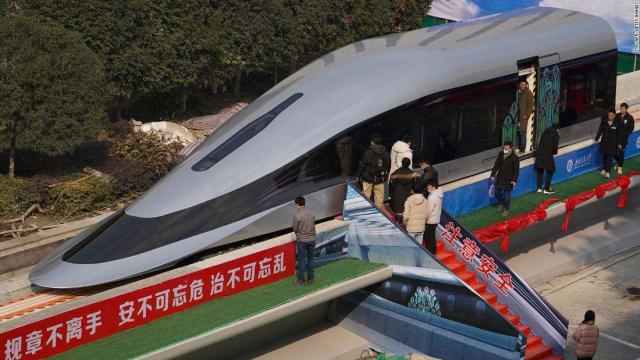Move aside Hyperloop, you were obsolete before the idea was ever dreamed up. Magnetic levitation trains are infinitely cooler, and significantly less expensive to produce as they don’t have to ride inside a vacuum tube. China is exploring avenues to increase the speed of its maglev trains, as it’s a very big country and wants to move people more efficiently. By using high-temp superconductors, researchers at China’s Southwest Jiaotong University tested a prototype train on a test track up to 620 kilometres per hour. The hope is to eventually push that speed to 799 kph.
The goal here is to get train travel between Beijing and Shanghai under 3 hours. For context, that’s almost 1,287 km and takes over 12 hours by car or 2 hours to fly. It’s like New York to Chicago, but you know, China.
By circulating liquid nitrogen through the tracks to supercool the magnetic field to -204 degrees C, the train becomes much more efficient. This process is also said to be 1/50th the cost of using liquid helium, which is traditionally used for even colder superconductivity around -233 degrees C. Apparently this train uses a very strong static magnet that keeps the train in suspension without requiring extra electric energy, only using the conductivity for forward motion, making it more efficient than traditional maglev trains.
China already has the most prevalent high-speed rail network, spanning 37,015 km of track. The country’s first maglev began operating in 2003. The fastest trains typically exceed 402 km per hour, with Japan operating some on test tracks over 563 km per hour. The L0-series train from Tokyo to Osaka is planned to run at 505 km/h with passengers aboard, though that line has not yet been finished.
This 620 km/h test in Chengdu certainly exceeds anything seen before. It will likely be at least a handful of years before the SJU superconductor maglev will be viable for commercial transportation, but it’s a huge step in the right direction.
Starting Wednesday the U.S. will have a president in favour of high speed rail, but it will be a long uphill battle for this country to adopt any kind of train travel. If we ever hope to be taken seriously as a global power again, we need to step up and actually develop something worthwhile. Remember that when you see Hyperloop test pods travelling at just over 161 km/h. Why mess around with a dangerous and unproven method when current tech is already capable of nearly four times as fast?
